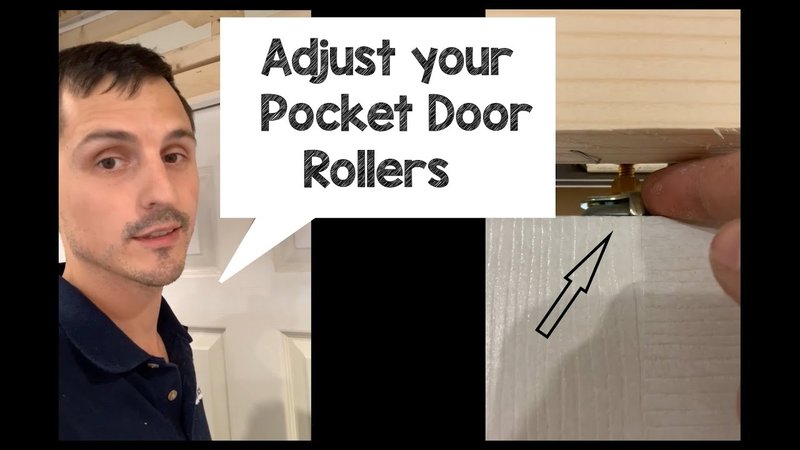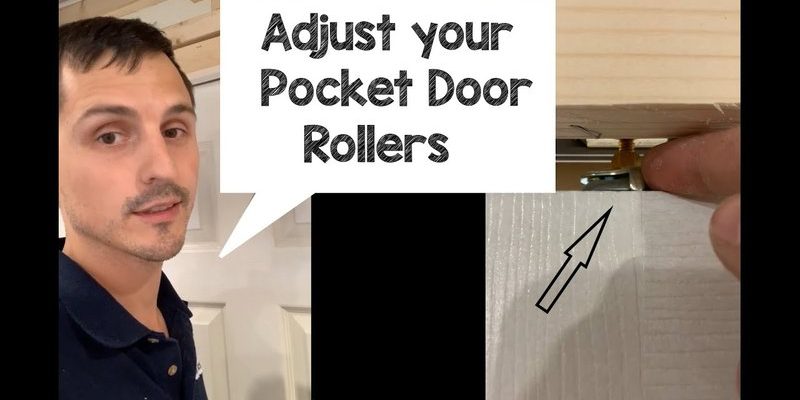
Pocket doors are great for saving space, but if they don’t open to your liking, it can be frustrating. Whether you have a Johnson Hardware pocket door or one from another brand, the principles stay pretty similar. Let’s dive into how to adjust the stop, making sure you get that perfect fit.
Understanding Pocket Door Stops
Before we dive into adjustments, it’s essential to know what a pocket door stop is. Think of it as the guardian of your pocket door’s opening range. It’s a small piece of hardware that prevents the door from sliding too far or not far enough. You might have a fixed stop or an adjustable stop type. Fixed stops are usually mounted on the door frame and stay put, while adjustable stops can move to allow for more flexibility.
Why does this matter? Well, a pocket door that closes properly not only keeps your space private but also protects it from drafts and noise. If your door is getting stuck or not opening wide enough, it could be due to the stop being set incorrectly.
Tools You’ll Need for Adjustments
Before you get started with the adjustments, gather these tools:
- Screwdriver: Depending on whether you’re working with Phillips or flathead screws, have both types handy.
- Tape Measure: To measure the opening distance accurately.
- Level: Ensures everything is aligned just right.
- Pencil: For marking adjustments or measurements.
Having the right tools on hand can save you time and hassle, so it’s worth checking this list before you start.
Step-by-Step: How to Adjust the Stop
Ready to adjust? Here’s a simple guide to help you along the way:
1. Identify the Type of Stop: Determine if you have a fixed or adjustable stop. This helps clarify how you’ll make changes.
2. Locate the Stop: Open your pocket door and find where the stop is attached to the door frame.
3. Make Adjustments:
– For fixed stops, you may need to remove the screws and reposition the stop.
– For adjustable stops, simply loosen the screws and slide the stop to your desired position.
4. Test the Door: After adjusting, slide the door back and forth a few times to check if it opens and closes smoothly.
5. Final Adjustments: If it’s not perfect, don’t stress! Just repeat the process until you achieve that ideal opening.
Common Problems and Troubleshooting
Even after making adjustments, issues can arise. Here are a few common problems and how to troubleshoot them:
– Door Sticks: If your door is still sticky, check if the track is clean. Dust or debris can cause the door to jam. A quick clean-up can do wonders.
– Uneven Opening: If the door opens unevenly, double-check that the stops are correctly aligned. A level can help ensure everything is straight.
– Noise Issues: If you hear squeaking, lubricate the track with some silicone spray. This will help the door glide smoothly without any extra sounds.
Why Proper Adjustment Matters
You might be wondering, why does it really matter if the door opens perfectly? Well, it’s all about *functionality* and *aesthetics*. A pocket door that opens well adds to the room’s flow, making it feel more spacious and organized. Plus, it preserves the integrity of the door and the frame; less wear and tear means a longer lifespan.
Also, have you thought about the *safety aspect*? A door that closes properly can help with noise reduction and privacy, creating a more tranquil environment at home.
When to Call a Professional
Sometimes, DIY just isn’t enough. If you find that your adjustments aren’t working or the door frame seems out of whack, it might be time to call in a pro. Professionals have the experience to spot problems you may miss, like structural issues or misaligned tracks. Plus, they can help prevent potential damage caused by improper adjustments.
In short, don’t hesitate to seek help if you feel overwhelmed. Sometimes, an expert touch is what you need to get things back on track—literally!
Adjusting a pocket door stop may seem intimidating at first, but it’s a straightforward process that can significantly enhance your living space. With some basic tools and a bit of patience, you can fine-tune that door to fit your needs perfectly. Just remember to take it step-by-step, troubleshoot common problems, and enjoy the benefits of a well-functioning pocket door.
The next time you slide that door open, you’ll appreciate the effort you invested in making your space just right. Happy adjusting!
